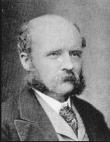Ernest Favenc, writer, journalist, historian and explorer, was a descendent of Huguenots who fled religious persecution in France in the seventeenth century. Educated at Oxford and Berlin, he came to Australia in 1863, where he worked on stations in North Queensland as station hand, drover and superintendent. He also participated in the push for mineral wealth that was inspired by gold strikes in the region in the late 1860s and the 1870s. In 1878-1879 Favenc led an expedition to the previously unexplored area between Blackall and Darwin to assess the practicability of a railway link from Brisbane. His reports appeared in the Queenslander, where he also published poetry, stories and serials.
In 1880 Fevanc married Bessie Matthews and moved to Sydney. His residency in Sydney was interrupted in the 1880s by expeditions into the Northern Territory, where he speculated in land ownership, and into Western Australia. His services were sought after because of his acquired bushcraft skills and knowledge of the outback. Favenc put his skills to good use when he worked for the Evening News, and contributed fiction and poetry to the Sydney Mail, the Bulletin, the Queensland Punch and the Australasian. He also published several books.
Fevanc's first major work History of Australian Exploration 1788-1888 (1888), supported by the New South Wales government, was very successful and remains a useful reference tool. His other publications include A Century of Progress (1902) and The Explorers of Australia and Their Life-Work (1908). He also wrote short fiction, namely The Last of Six : Tales of the Austral Tropics (1893); novels, The Secret of the Australian Desert (1895) about the fate of the explorer Ludwig Leichhardt and Marooned on Australia (1896) based on the fate of the crew of the Batavia; and his only volume of poetry, Voices of the Desert (1905). His children's books mix historical fact with fantasy. Despite his close dealings with Aboriginal people, in The Secret of the Australian Desert (1895), Fevanc invented an alternative indigenous race given to strange and exotic customs.
 2090439171331163480.jpg
2090439171331163480.jpg